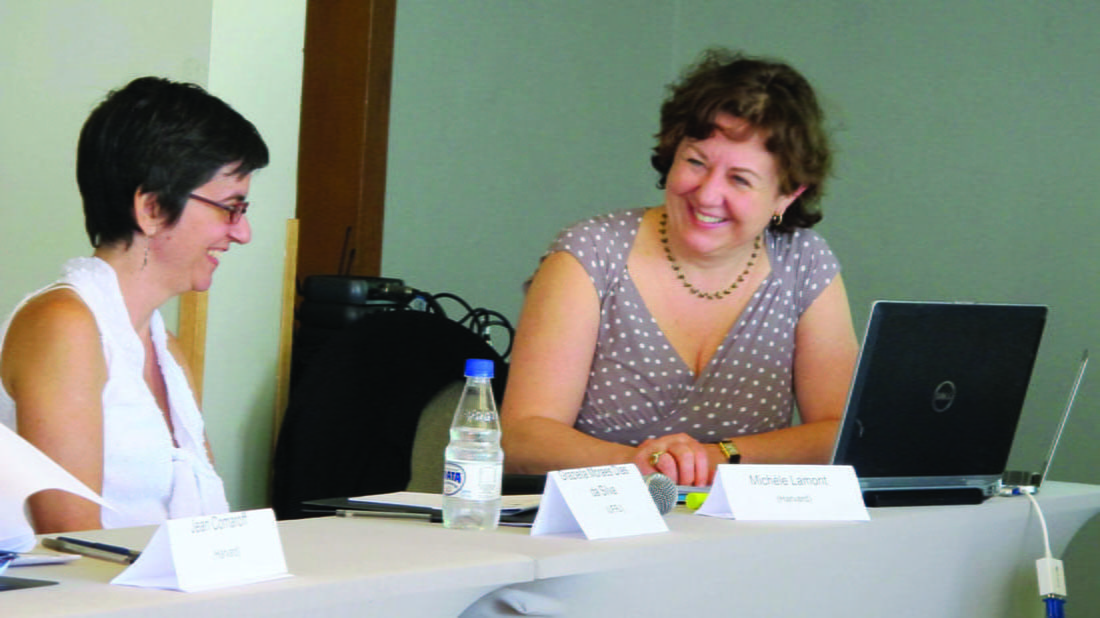Looking Back on Ten Years of Collaboration and Respect
We are three among the seven coauthors of Getting Respect: Responding to Stigma and Discrimination in the United States, Brazil and Israel, a recently published book that revisits one of the main dimensions of comparison across the Americas and elsewhere: race relations. In an international academic environment fueled by a concern for post-colonial dynamics, a partnership between Harvard University and the Federal University of Rio de Janeiro on this topic was a challenge: a number of studies about Brazilian race relations have been criticized for looking at these issues through the eyes of the United States (what Pierre Bourdieu and Loïc Wacquant have termed “the cunning of American imperialism”). In contrast, our study sought to avoid imposing distorting assumptions about what antiracism is or should be. From the conception of the research questions, to the design of the interview schedule, the creation of codes for the analysis of the data and the writing of the results, ours was a truly collaborative project. Between our first meetings to design the project to the final publication of the book, ten years quickly went by. What are the conditions that allowed us to successfully bring it to completion?
The collective design and writing of Getting Respect involved the seven main authors at different stages of their careers and lives. In addition, the project employed numerous research assistants charged with conducting some of the interviews as well as parts of the coding. Spatially located in various cities across three continents, we quickly realized that it would be hard to work across different academic calendars, while conducting and analyzing interviews in different languages, were not easy tasks. Each step required repeated face-to-face meetings, as well as more regular Skype meetings. But the logistical challenges paled in comparison to the intellectual challenges, especially given our commitment to producing collective research in a truly collaborative fashion.
Probably the most important lesson we learned in the process is that collaborative projects involve not only cognitive but also emotional connections. From a substantive perspective, respecting and valuing the complementarity of our respective areas of expertise was essential to the success of the enterprise. While regional diversity was essential to gaining a better understanding of the forms that responses to racism take across local contexts, our varied intellectual trajectories—with analytical tools from cultural sociology, political science, or gender studies—enabled us to see different dimensions of our research questions. This academic back-and-forth was always rooted in strong personal relations that demanded flexibility and adaptation to the needs of each person. More concretely, during these ten years, people graduated, found jobs, changed jobs, moved countries, lost loved ones, had children and grandchildren. Each of these events slowed the collaboration, but it could not be otherwise, as the pace had suit the lives of everyone involved. In addition, we all had other professional commitments and writing projects. All this means that collaborations can be complicated and are not always smooth.
It was also important to share a methodological approach (how to conduct interviews) and epistemological assumptions (how to study identity). The fact that Michèle Lamont had been the doctoral advisor of three of the seven co-authors (Joshua Guetzkow, Graziella Moraes Silva and Jessica Welburn) helped ground the project—facilitating a shared vision across the three research sites—and most important, a shared definition of how to produce a high quality piece of scholarship.
What lessons can be drawn from our experience, when one wishes to reflect on collaborations between Latin American and Harvard social scientists?
We believe our biggest advantage was the human bond that connected us—building and strengthening bridges between Harvard and Latin America. Common history and previous exchanges also allowed us to downplay the status inequality between academic center and academic periphery to create the equal plane essential for open, productive and genuine intellectual exchange. Whether the book will have a lasting impact on the scholarship on comparative racism remains to be seen. But lasting and rewarding friendships and intellectual partnerships were certainly formed through exchanges of mutual respect and appreciation. We consider these to be achievements of great value.
Fall 2017, Volume XVII, Number 1
Michèle Lamont is Professor of Sociology and of African and African American Studies and the Robert I. Goldman Professor of European Studies at Harvard University.
Graziella Moraes Silva is a professor at Federal University of Rio de Janeiro and the Graduate Institute of International and Development Studies, Geneva.
Elisa Reis is a professor at the Federal University of Rio de Janeiro.
Related Articles
Telenovela Heroines
I first became interested in telenovelas as an academic subject when, more than thirty years ago, I heard my then two-year-old daughter sing a song for the first time. It was the opening…
Sharing Latin Loves in Lithuania
When I was growing up in Lithuania, at the time the country transitioned from the Soviet rule to independence, my grandmother and I used to watch Mexican and Venezuelan telenovelas…
Narconovelas
n May 2017, the acclaimed band Los Tigres del Norte was fined $25,000 for singing a couple of narcocorridos (traditional Mexican ballads with lyrics that tell of the exploits of drug traffickers)…





